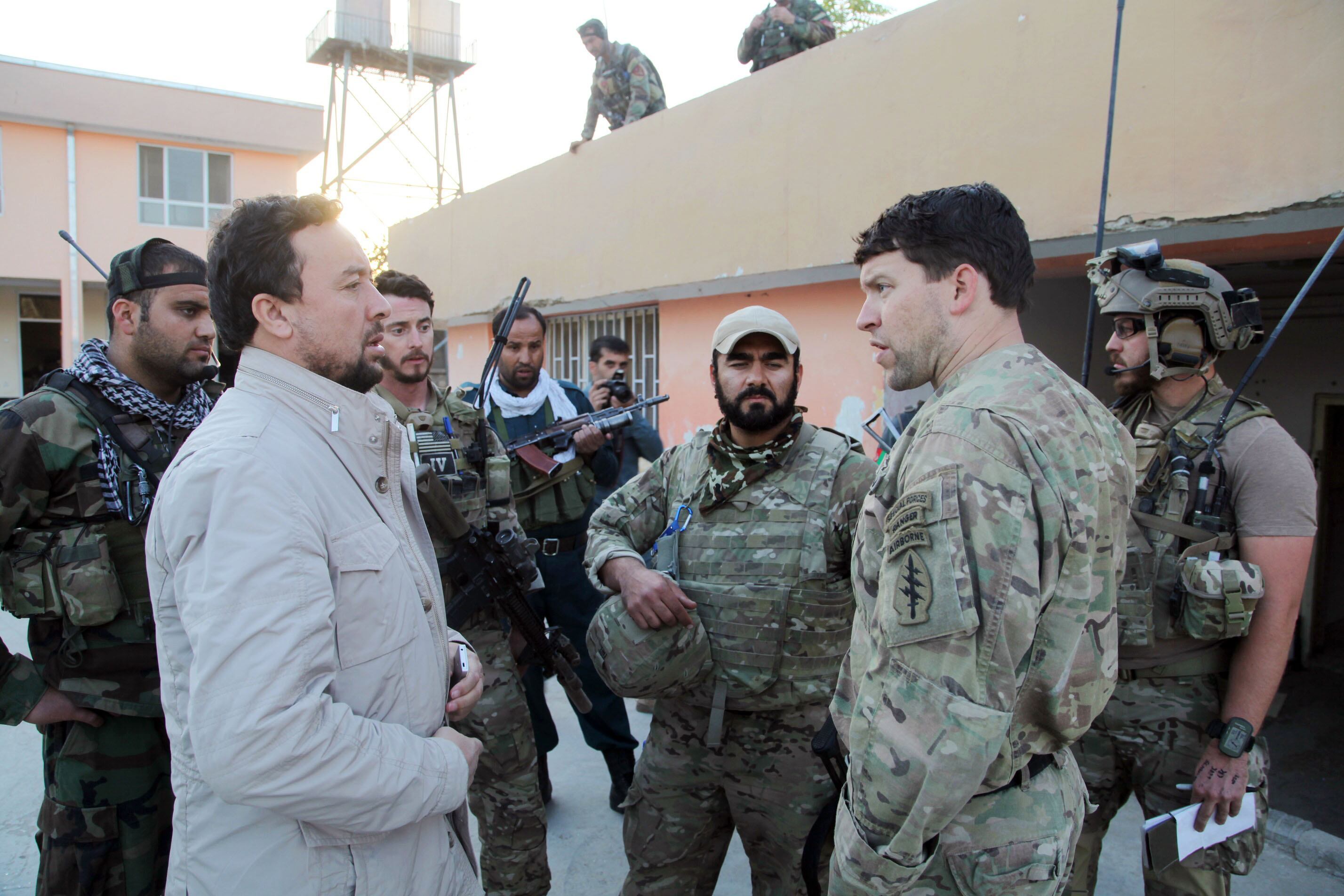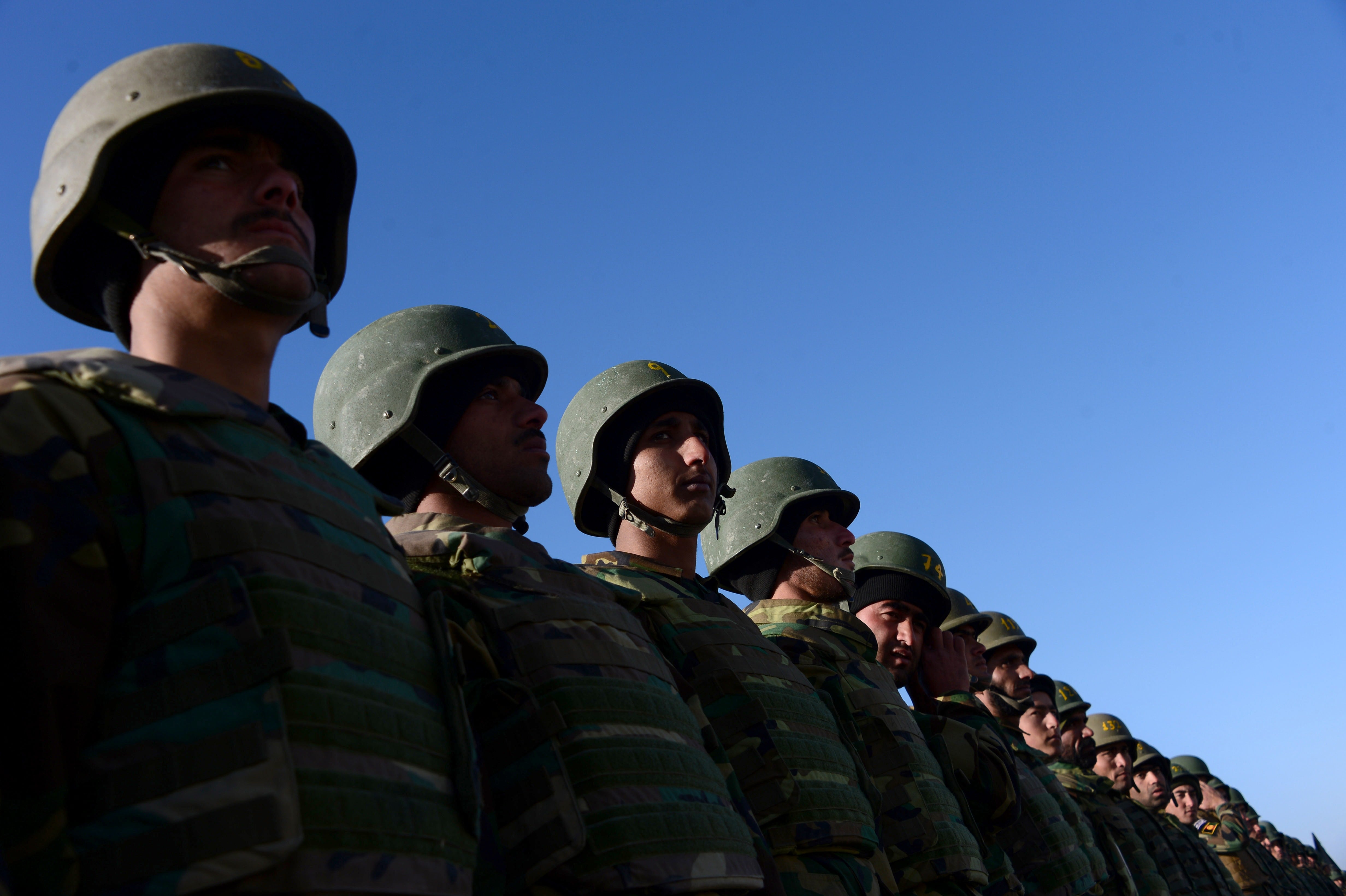WASHINGTON — Weaponry provided to the Afghan military over the last 16 years has slowly trickled down to the Taliban through corruption and battlefield losses.
Armored vehicles, night vision devices, M-4s, laser illuminators and scoped optics have all found the way into Taliban hands over the years.
And at times the U.S. has been forced to combat its own armored vehicles and weapons.
For instance, captured U.S. up-armored Humvees are being used as suicide vehicle borne improvised explosive devices, or SVBIEDs. This tactic has also been a favorite of ISIS fighters in Iraq and Mosul, causing coalition forces to supply anti-tank weaponry to defeat the heavily armored mobile bombs.
According to Maj. Kendra Motz— the spokeswoman for the 300-person Task Force Southwest — the Marine unit has launched “strikes” to destroy stolen Humvees, to prevent the resurgent Taliban threat from using them as SVBIEDs.
“There are reports of Taliban with some night-vision capabilities,” Motz told Military Times. A senior Afghan defense official also confirmed that some Taliban fighters have night vision capabilities.
Pictures of a few Taliban with older generation AN/PVS 7b night vision have also appeared on Taliban propaganda videos posted to the group’s official website.
The U.S. has spent billions in military aid to the Afghan military over the last 16 years. This year’s request through the Afghan Security Forces Fund stands at nearly $5 billion, an increase of nearly $800 million from last year and almost $1.5 billion more than FY2016.
This year the Afghan air force will field new UH-60 Black Hawks to replace aging Russian Mi-17s, and new cell phone exploitation kits to boost intelligence collection capabilities.
The 2018 request for funds also includes upgrades and replacements to sophisticated rifle optics and night vision equipment, such as 4x magnification ACOG scopes and infrared lasers.
“The [Afghan Special Security Forces] require the ability to upgrade, procure and replace battle damaged night fire equipment, infrared illuminators, range finders and other equipment sets that support Special Forces operations during limited visibility conditions,” the budget request reads.

“I never experienced the [Taliban] having a large number of their fighters with this more advanced equipment, it was always just a couple here and there,” said Adam Routh, a former Army Ranger and defense strategies expert at the Center for a New American Security — a think tank located in Washington, D.C.
“It would also surprise me if a large number of [Taliban], in the same area, had complete sets of advanced equipment,” Routh added.
In areas of Uruzgan province, the Afghan National Army, or ANA, is afraid to conduct night operations, impacting its ability to hold re-captured terrain, a U.S. military official told Military Times.
Large numbers of Taliban fighters in the area have night vision, ACOGs, and M-4s, and they are fighting an ANA force supplied with only M-16s, helmets and flak jackets, the official said.

In one instance, an ANA night patrol in the region experienced nearly 20 casualties because the opponent was better equipped, the official said.
Corruption also plays a prominent role.
In Uruzgan for instance, ANA soldiers have sold ammunition to locals in the villages, including Taliban commanders, to bridge the gap of wage theft committed by commanding officers, the official explained.
Gen. John Nicholson, the commander of U.S. forces in Afghanistan, pushed a plan before lawmakers in February with a focus on rebuilding and boosting the offensive capabilities of the Afghan special forces units to break the “stalemate.”
However, much of the problem is the ability of conventional Afghan troops to hold terrain re-captured by Afghan commando offensive operations.
The White House is still considering a proposal to increase troops in America’s longest war by nearly 4,000. The budget proposal submitted by the Defense Department seeks to revitalize Afghan forces battlefield edge while boosting offensive capabilities.
But neither proposal addresses corruption and low morale among Afghan army troops.
Much of this year’s request for funds for the Afghan military is dedicated to its special forces units. Afghan President Ashraf Ghani wants to double the size of its current special forces units including the Afghan Special Mission’s Wing — which flies night time operations in support of Afghan special forces, according to the budget request.
Shawn Snow is the senior reporter for Marine Corps Times and a Marine Corps veteran.




